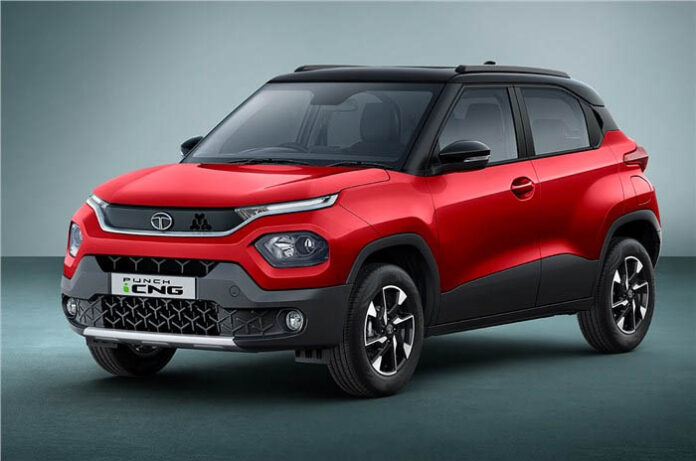
Tata Motors, the automobile manufacturer, aims to decrease its dependence on fossil fuel-based technologies by ensuring one in every three passenger vehicles it sells in the near-to-mid-term are either CNG or electric-powered, a top executive at the automaker said.
With the addition of the Altroz iCNG, which boasts of the company’s patented “integrated mounting system for a vehicle”, and the launch of an additional electric model this fiscal year, Tata Motors expects the share of gas-powered models and battery electric vehicles within its passenger vehicle portfolio to increase to 15% each from the current 8% and 9% respectively in three-four years, said Shailesh Chandra, Managing Director of Tata Motors Passenger Vehicles and Tata Passenger Electric Mobility.
“In the next three to four years, we envisage diesel, electric and CNG to contribute equally – 15% each – as we expand our portfolio,” Chandra told reporters. The CNG variants of the Tiago and Tigor have 30- 50% of their total sales coming from gas-powered vehicles and Altroz is likely to follow a similar trend, he added. Like rivals Maruti Suzuki and Hyundai Motor, Tata Motors is betting big on CNG. Demand for such models has been steadily increasing, driven by improved availability of the fuel, launch of new models and lower running cost. Sales grew three times to 30,000 units in March 2023 from 10,000 in March 2021, show registration data from the Vahan dashboard.
Demand for CNG models is set to get another boost following a recent revision in the formula for fixing domestic gas price, which led to a price cut. But for all the practicality and economy it offers, CNG models do not invoke any aspiration owing to the low-frills nature of the variant available in the market and compromised performance and boot space, said Chandra. Tata Motors managed to address a few of these concerns with the introduction of the iCNG technology, coupling it with high-end features and creature comforts in Tiago and Tigor a year ago, Chandra said, adding that the company is now looking to “redefine the CNG market by addressing the major concern on boot space”.
The smart placement of the twin cylinders under the luggage area ensures that the cylinders are concealed, and the boot space is akin to fossil-fuel cars. All upcoming CNG models from the company will have the twin-cylinder technology. Meanwhile, in a bid to cement its leadership position in the electric car market, Tata Motors will be launching an electrified version of another internal combustion engine (ICE) model in the current fiscal year. This will most likely be the electrified version of the Punch, the company’s micro-SUV, according to people aware of the plans.








